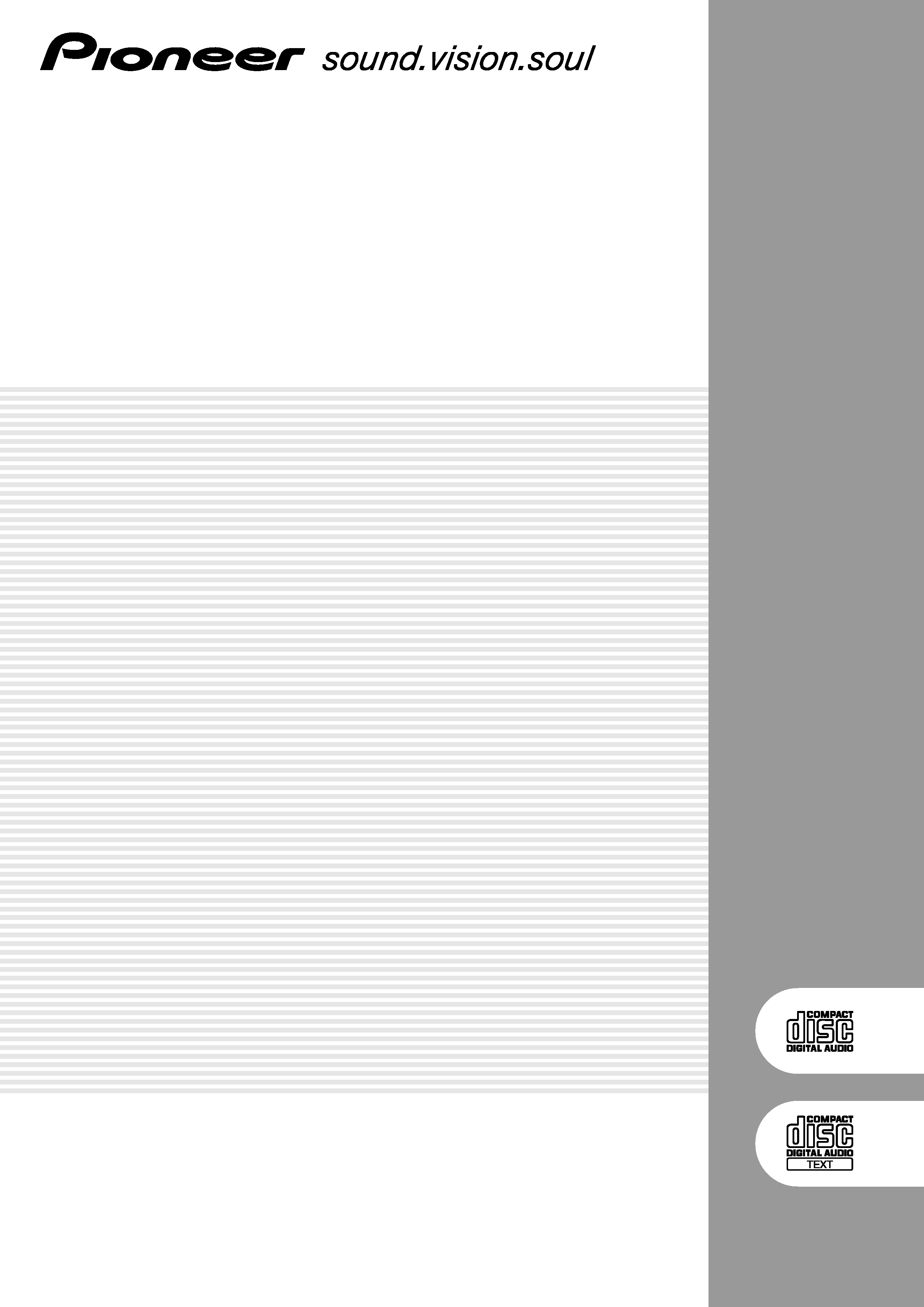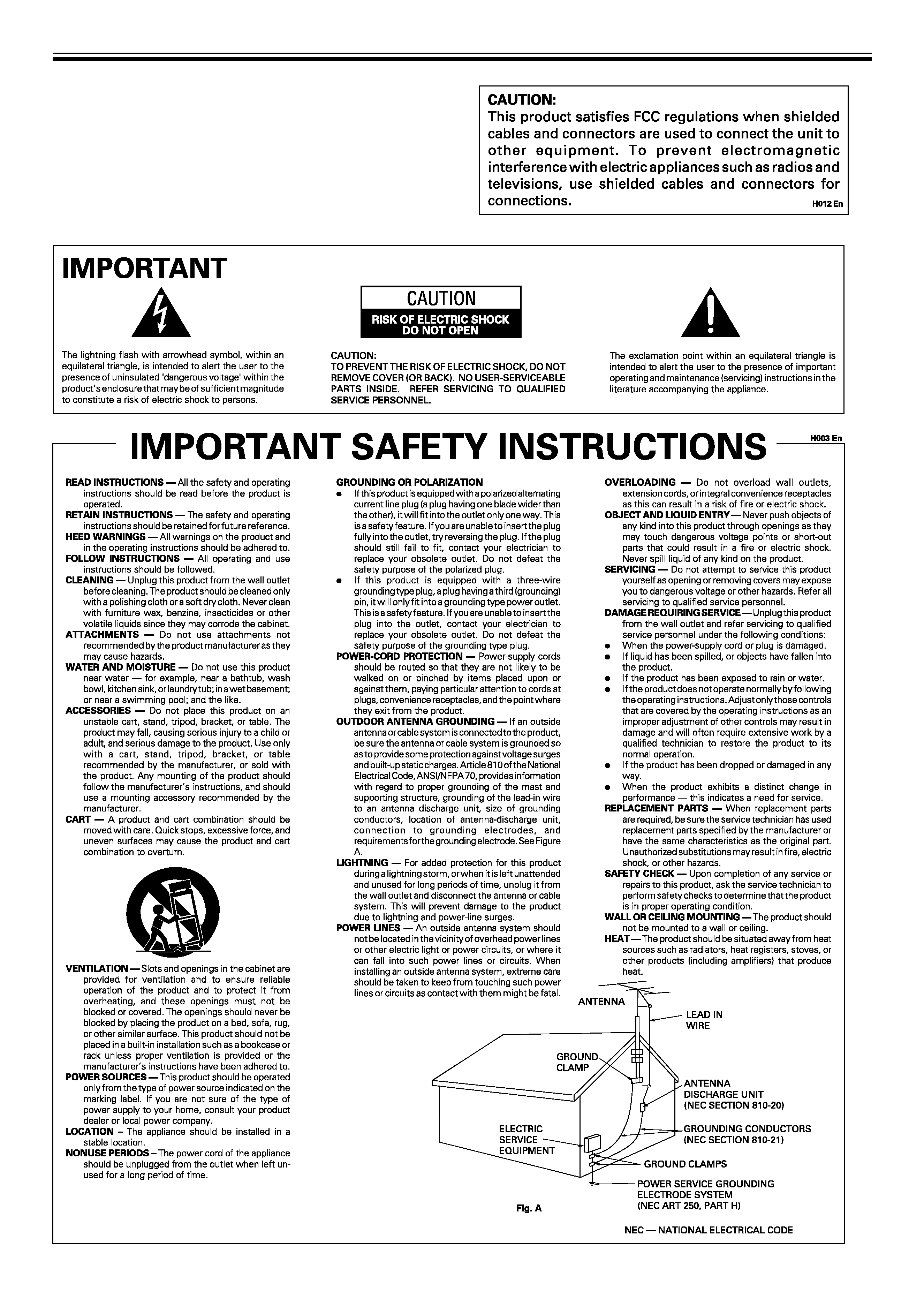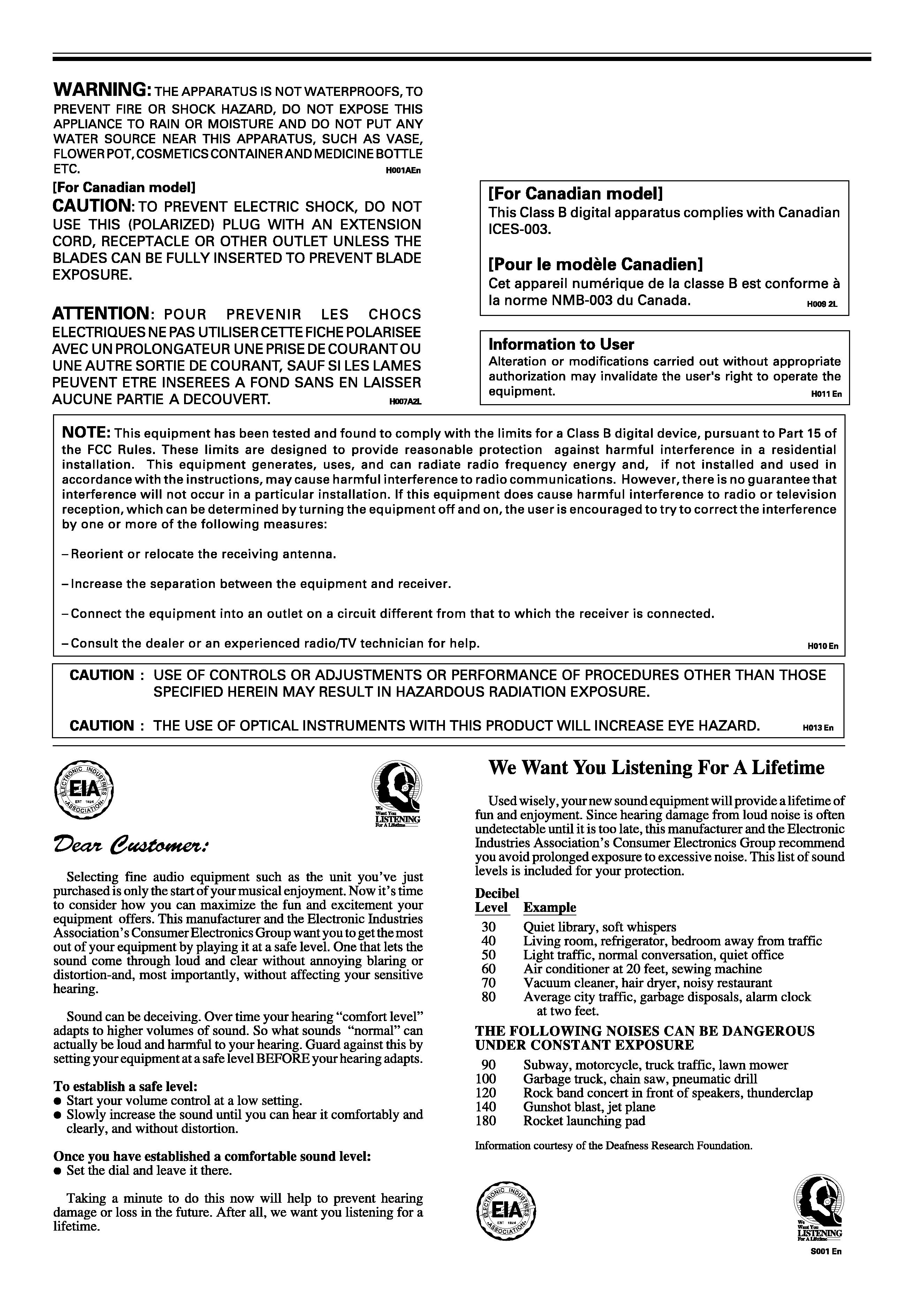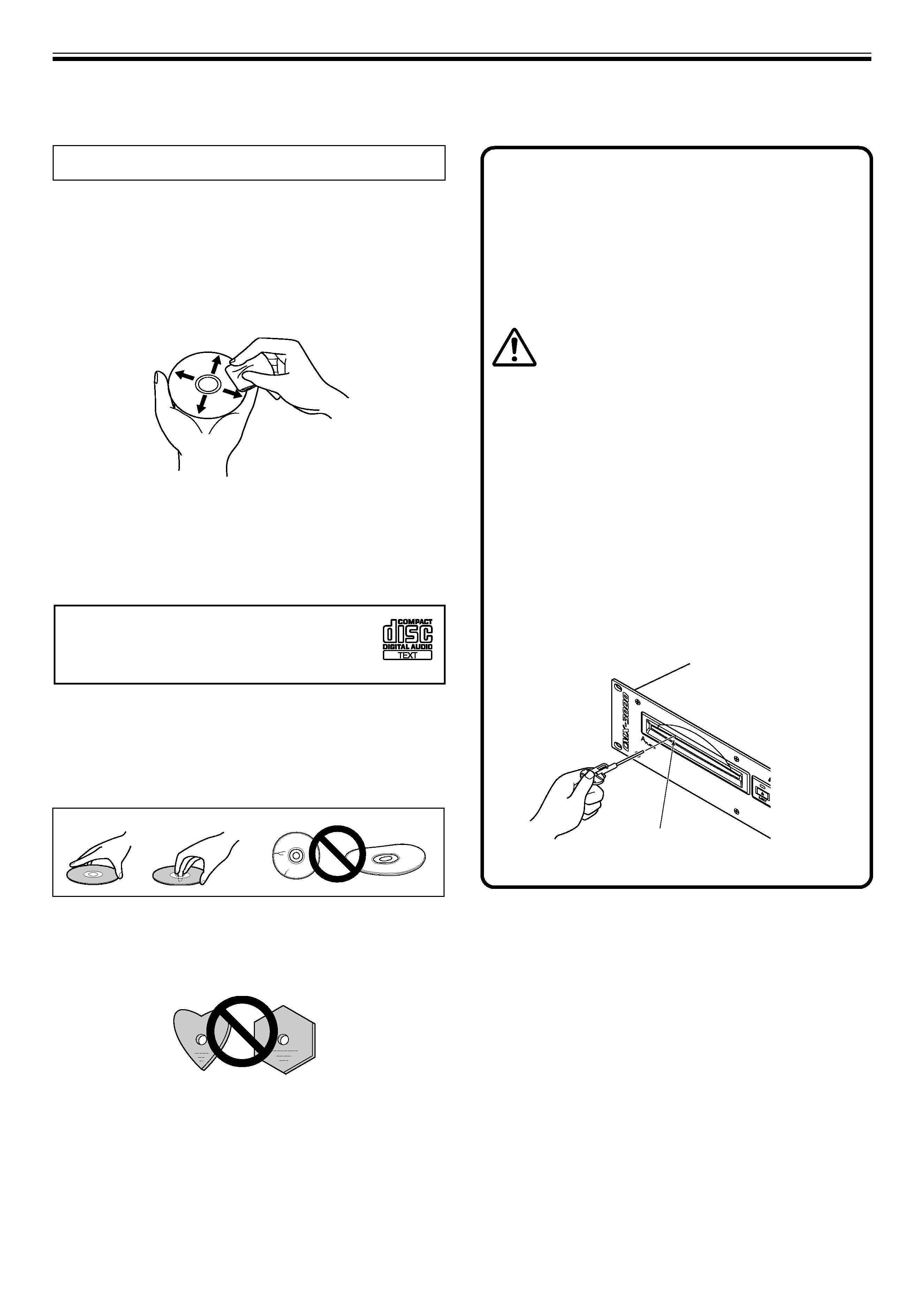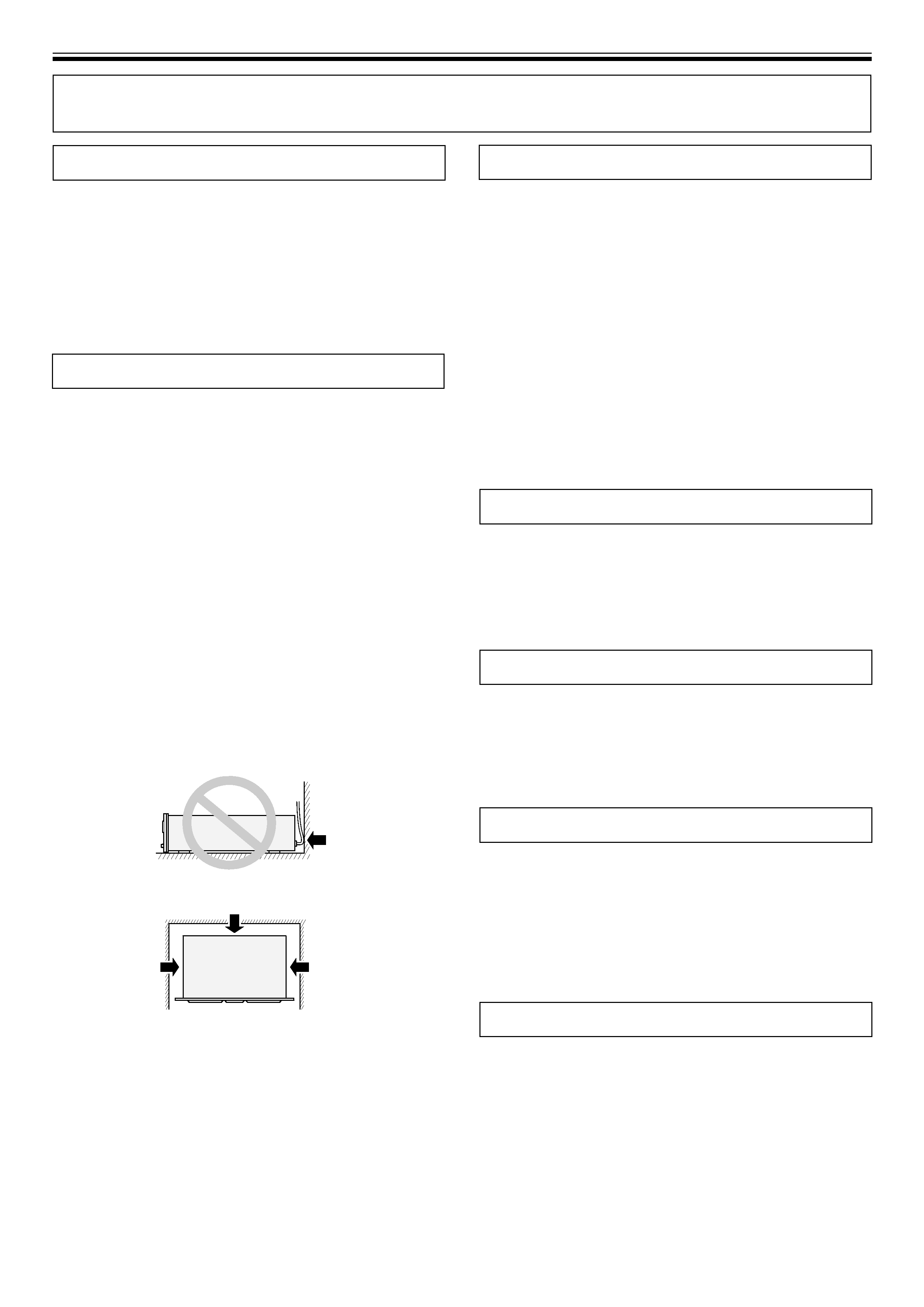
4 <DRB1307>
CAUTIONS REGARDING HANDLING
Location
Install the player in a well-ventilated location where it will not be
exposed to high temperatures or humidity.
Do not install the player in a location which is exposed to direct
sunlight, or near stoves or radiators. Excessive heat can
adversely affect the cabinet and internal components.
Installation of the player in a damp or dusty environment may
aiso result in a malfunction and can be hazardous. Avoid
installation near cookers etc., where the player may be exposed
to oily smoke, steam or heat.
Installation guidelines
÷ Placing and using the compact disc player for long periods on
heat-generating sources such as amplifiers or near
spotlights, etc. will affect product performance. Avoid placing
the player on heat-generating sources.
÷ Install this compact disc player as far as possible away from
tuners and TV sets. A compact disc player installed in close
proximity to such equipment may cause noise or degradation
of the picture.
÷ Noise may be noticeable when an indoor antenna is used. In
such cases, make use of an outdoor antenna or turn off
power to the compact disc player.
÷ When the unit is used in a loud-sound environment, e.g., near
a speaker, sound skip may occur. Install the unit away from
the speaker or reduce the listening volume.
÷ Place this unit on a level surface and a stable platform.
÷ Be sure the player, including its audio and power supply
cords, does not touch vibrating materials. Any cause of
vibration other than the insulators may cause the disc to skip.
Take special care when using the player while it is installed in
a carrying case.
Installing the CMX-3000 in an EIA rack
The screw holes on the front panel o the CMX-3000 are
designed for use in attaching the unit to a 19-inch EIA rack.
÷ Remove the five legs on the unit before installing the unit in
the rack.
÷ Attach the unit to the rack using screws of the appropriate
size (screws not provided with the unit).
Note
÷ Never place this CD player directly above a power amplifier,
as the heat given off by the amplifier might result in damage
to the unit. Placing the CD player directly above a power
amplifier might also result in ham radio signals being picked
up or in other types of interference.
÷ Always be sure to remove the CD player from its rack before
shipping.
÷ When moving the CD player while still installed in its rack,
exercise caution to avoid subjecting the player to shocks or
vibration.
Cleaning the player
To clean the PLAYER wipe with a polishing or a soft, dry cloth.
For stubborn dirt, moisten a soft cloth with a weak solution of
neutral detergent (diluted in five to six parts water), wring the
cloth well, and wipe away the dirt. Use a dry cloth to wipe the
surface dry. Do not use volatile liquids such as benzene or
thinner which will damage to the unit.
CD lens cleaner
The player's pickup lens should not become dirty in normal use.
If for some reason, the lens becomes soiled and malfunctions,
contact your nearest PIONEER authorized service center. Lens
cleaners for CD players are commercially available, but special
care should be exercised in their use as some may cause
damage to the lens.
Storing discs
÷ Discs are made of the same kinds of plastic used for
conventional analog audio records. Be careful not to allow
discs to warp. Always store discs in their cases vertically,
avoiding locations with high heat, humidity, or extremely low
temperatures. Avoid leaving discs in cars; the interior of a car
in direct sunlight can become extremely hot.
÷ Always read and abide by the precautionary notes listed on
disc labels.
Condensation
When this unit is brought into a warm room from previously cold
surroundings or when the room temperature rises sharply,
condensation may form inside the unit and impair its
performance. In such cases, allow the unit to stand for about an
hour or raise the room temperature gradually.
Read before use
Do not place on or against
vibrating materials!







